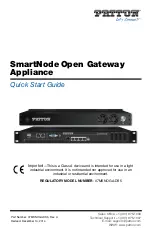
— 8 —
II. NMEA Basics
This section describes the basics of NMEA 0183 and NMEA 2000 networks. We are recommend getting
familiar with this section before connecting the Device.
These networks are very different at the electrical and software levels. NMEA 0183 also has traveled
a long evolutionary path, but thanks to its simplicity and cheapness, it is still very popular and widely used.
1. NMEA 0183
The default speed of a NMEA 0183 interface is 4800 baud. A high-speed interface is 38400 baud
and was designed especially for AIS, but usually chart plotters and instrument displays allow any data
(not only AIS) on a high-speed port. On a chart plotter, port speed can be configured in settings.
NMEA 0183 uses different wires for talking (transmitting, TX) and listening (receiving, RX) data. One
talker can be connected to multiple listeners, but a listener can have only one talker connected. Special
devices called “multiplexers” are used to join the output of multiple talkers to a single stream.
Figure 1. (a) RS-232 and (b) RS-422









































